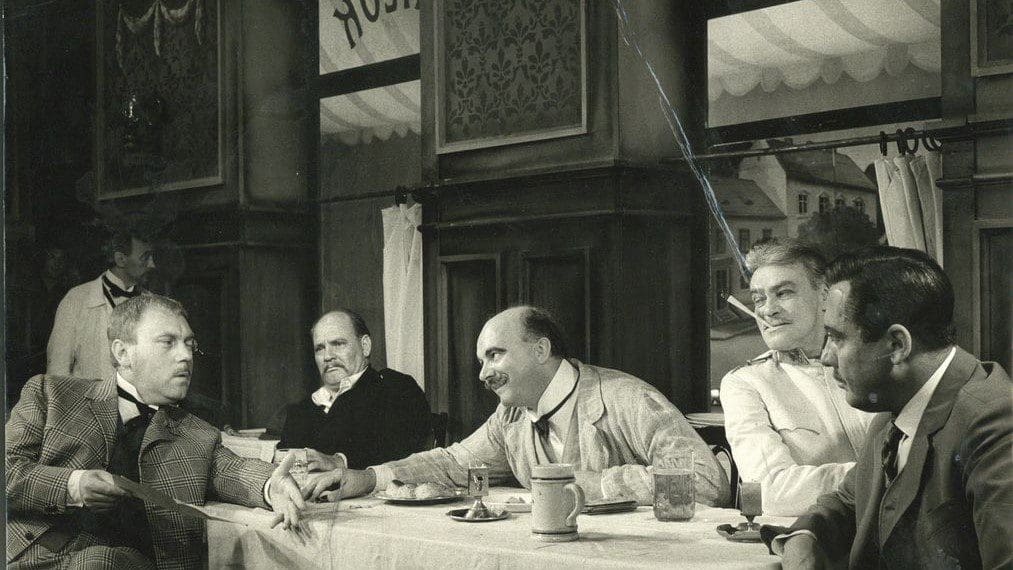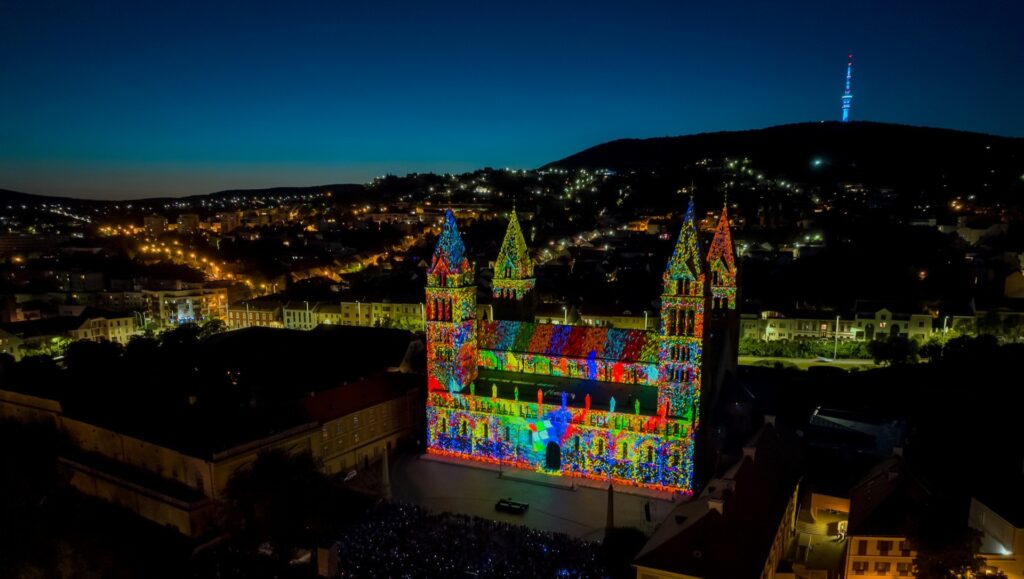‘We were the Leopards, the Lions, those who’ll take our place will be little jackals, hyenas; and the whole lot of us, Leopards, jackals, and sheep, we’ll all go on thinking ourselves the salt of the earth.’
/Giuseppe Tomasi di Lampedusa: Il Gattopardo/
From the right-wing critique of ‘woke capital’ to the new leftist and ‘social justice warrior’ critics of capitalism, the evaluation of the economic and class structure of societies from a cultural viewpoint has become more and more widespread in recent decades. In order to understand the changes happening today, it is worth examining their prefiguration: the transition from feudalism to capitalism, and the literary views on it.
From the beginning of the twentieth century until after WWII, literature in Europe often concerned itself with the decay of the nobility and high aristocracy, especially in countries like Italy and Hungary, which concluded their transition from feudalism to capitalism relatively late. In this essay, we will analyse two acclaimed novels to illustrate how Hungarian and Italian literature responded to the late transition of the European periphery into capitalism. Úri muri (Very Merry, 1928) by Zsigmond Móricz, and Il Gattopardo (The Leopard, published posthumously in 1958) by Giuseppe Tomasi di Lampedusa are excellent examples to illustrate the parallels and differences in the reactions to this phase of transition.
The morals of these novels easily remind the reader of Edmund Burke’s opinion on the aristocracy. Burke described this class
as a huge and majestic oak tree, with an elaborate canopy.
However, Burke warned that if the canopy no longer provides relief from the sun for travellers, the tree loses its purpose. And then, its imposing structure makes it even more useless than a smaller tree would be. Therefore, while Burke generally defended the role of the aristocracy, he deemed decadent and uncaring nobles as hateful and repulsive.
Elaborating on this idea, it can be asked whether the bourgeoisie ultimately assumed the paternalistic role of the old aristocracy. The Brazilian thinker Plínio Correa de Oliveira identified several ‘revolutions’ which took mankind further away from God and a purported ‘natural order’. It can be argued that several ‘revolutions’, especially the Renaissance and the Enlightenment, were also milestones in the rise of capitalism. However, the latest, and most dangerous ‘revolutions’, according to Professor de Oliveira, were communism and Bolshevism, ideas diametrically opposed to capitalism and the free market. Furthermore, he pinpointed revolutionary tendencies as early as during the late medieval centuries when the power of the nobility was still unchallenged.
Considering all of the above, including the ultimate decline of the aristocracy, it would be futile to dismiss the importance of capitalism and the bourgeoisie. However, it may be appropriate to suggest that unless the capitalist class returns to the traditional values of our civilisation, if it fails to successfully sail between the Scylla and Charybdis of woke madness and alt-right tendencies, it is bound to embark on a downward path, similarly to the 19th century nobility.
In their works, Móricz and di Lampedusa teach us about the tragedy of the decline of the elites: the ultimate moral of these novels is that the decline of a ruling class affects society as a whole, which eventually makes
the tragedy of one class the tragedy of a whole nation.
Historical Backdrop of the Novels
Late nineteenth century Sicily—which, contrary to its name, also included Naples and much of Southern Italy— and Hungary had many differences and similarities at the same time. Both countries had recently been conquered by more advanced and industrialised nations. Sicily was annexed by Piedmont in 1860, while Hungary was re-annexed by the Habsburg Empire after the quelled Revolution of 1848. While the Marxist terminology of Immanuel Wallerstein should not be used uncritically, in a certain sense both countries could fall under the category he described as agricultural ‘half-periphery’, or ‘periphery’, as opposed to the industrial ‘core’ realms of Austria and Sardinia-Piedmont. On the other hand, both conquered countries soon reached a compromise with their oppressors.
Sicily subsequently found itself as part of a unified Italy, while Hungary became the roughly equal member of the dual monarchy of Austria-Hungary after the Compromise of 1867.
Political emancipation, however, did not mean economic equality,
or lack of radical change. The Sicilian nobility rapidly lost its positions to Northern Italian industrialists and merchants, while Hungary always had the lower hand in its tariff debates with Austria.
On the other hand, there were different aspects too. While Sicily was literally occupied and annexed by Sardinia-Piedmont, Hungary made a peaceful deal with Austria, which ended not only the autocratic rule, enacted after 1849, but also the absolutism, which often characterised the Austrian emperors for centuries before 1848. Sicily’s economy became subservient to Northern industry. However, while Austria always had stronger positions economically, the decades of the ‘dual monarchy’ was the era of economic boom and technological advancement for Hungary.
In the case of Sicily, the emerging capitalist class was ‘foreign’: Piedmontese or other Northern Italian. As far as Hungary is concerned, instead of an Austrian ‘colonialisation’, capitalist progress was mostly championed by Hungarian entrepreneurs. Furthermore, while the Sicilian high aristocracy became second fiddler to the Northern capitalists, in Hungary, the magnates of ancient families successfully turned their estates into industrial agricultural businesses. Thus the Hungarian aristocracy became part of the new economic elite, alongside the Hungarian Jewish and German, as well as other capitalists of ‘commoner’ stock.
The Literary Representation of the Phenomenon
The importance attributed by the cultural elites of the time to the social phenomenon described above is also signalled by its prominent place in Italian and Hungarian literature. In Hungary,
it prompted the emergence of a new literary genre, the ‘gentry novel’,
the representative authors of which were Kálmán Mikszáth and Zsigmond Móricz. In Italy, too, prominent writers concerned themselves with the issue, such as Giovani Vega and Giuseppe Tomasi di Lampedusa. Furthermore, even Carlo Collodi’s Pinocchio contrasts the values of the emerging capitalist and the decaying aristocratic classes.
Zsigmond Móricz was born in 1879, to an ancient, but impoverished noble family in Hungary. His primary interest was the deprivation of the Hungarian peasantry. However, he also devoted a considerable amount of attention to the decline of the so called ‘gentry’, the lower to middle nobility. His novel Úri Muri (Very Merry) is a prime example of an allegoric, yet forceful representation of the tragedy of this class. His Italian counterpart, Giuseppe Tomasi di Lampedusa was born in 1896 to a Sicilian aristocratic family. Although he did inherit an estate and a palace, it was merely a fraction of the vast wealth his ancestors used to have. Therefore, while he was brought up in more affluent circumstances than Móricz, he did witness first hand the decline of the Sicilian aristocracy. It is this process that his only novel titled Il Gattopardo (The Leopard) registers.
The Crossroads of the Nobility
Móricz’s novel follows 4–5 days of a company of gentry nobles, while the book by di Lampedusa encloses a span of several decades. The hero of Very Merry is a well-off mid-level gentry nobleman, Zoltán Szakhmáry, while that of Il Gattopardo is Don Fabrizio Corbera, a Sicilian non-royal Prince (or Duke, according to the English terminology). While the amount of their wealth and estates are different, they are both experiencing a turning point in their lives, due to the economic and social changes of the Modern Age. They are considered wealthy and respected in their respective communities, however, the turbulent outside world is on the brink of destroying their whole social environment.
Both are making futile gestures to adapt to the revolutionary change. Don Fabrizio sides with the Risorgimento, the Piedmont-led Italian unification, making his Garibaldian nephew his de facto heir, while marrying him off to the daughter of a nouveau riche businessman. Zoltán, on the other hand, concerns himself with more earthly adaptation tactics by trying to modernise and upgrade his estate. However, in the tempest of history, neither of them prevails.
While slowly ageing, the Sicilian prince witnesses the triumph of the Northern Italian capitalists. On his deathbed he concludes that he was the last true Prince of Salina. The reaction of the Hungarian main character to the social changes is more dramatic: in a moment of revelation, the tragedy of both his class and his personal life dawns on Szakhmáry, who commits suicide after setting his mansion and estate on fire.
Both novels also show the victorious new ruling class to the reader. Don Fabrizio is forced to marry his heir off to an upstart, rich family, and cozy up to his new brother-in-law, Calogero Sedara, the peasant-turned-crooked businessman, who enriched himself in shady ways and thanks to his political connections to the new establishment. Vulgar and materialistic as he is, now he has the upper hand over the Prince,
just as the Northern bourgeoisie had the upper hand over the Sicilian aristocracy, and industrial capitalism over agricultural society.
In the story of Zoltán Szakhmáry, the new elite is featured less prominently. There is an important intermezzo, however, in which Szakhmáry begs for loan from Mr Lefkovits, a wealthy banker, who lectures Zoltán on how he rose from being an egg-vendor to his current position.
Both Móricz and di Lampedusa demonstrate a nuanced and sympathetic approach to their heroes. Móricz’s works, written in the 1920s, falls into the category of the Hungarian ‘gentry novel’. During the Horthy era of Hungary (1919–1944), the gentry nobility commenced a comeback, capturing some key positions in the administration. However, Móricz was not happy with the results of the brief re-emergence of his own social class. It soon became clear that even if the gentry were able to regain some of their lost ground, they were not in a position any more to give the history of Hungary a new direction.
Authors like Móricz had fewer illusions about the nobility’s fate than their literary predecessors. Unlike the marvellous heroes of Mór Jókai’s grand historical novels like Zoltán Kárpáthy, who challenged the status quo of their time, Zoltán Szakhmáry and his fellow noblemen were fallible, and eventually lost their game. However, they are portrayed more favourably than in the hyper-realistic later novels of Móricz (e.g. Hot Fields).
Rural gentry was seen and depicted as bohemian, fun-loving, sometimes even crude, and often drunk. At the same time, they were also set as generally kind-hearted and magnanimous. For instance, Zoltán spends the banker’s business loan immediately on his lovely young mistress he genuinely cares about. The aristocratic figures in Il Gattopardo are presented even more positively. The Prince of Salinas is an intelligent and polished gentleman, as well as a loving father, who is faithful to the King and the Catholic Church, while approaches his peasant workers with fatherly love.
Zoltán is a realistic, yet still somewhat idyllic symbol of his social class, while the Prince is more or less an idealised version of a typical aristocrat. They are in stark contrast with the representatives of the new estate. Sedara is the classic villain of the Italian novel, dull and ruthlessly materialistic. Mr Lefkovits is a less sinister character. However, his thinking still seems to revolve around the crude desire to accumulate wealth.
Neither di Lampedusa nor Móricz had illusions about the nouveau riche businesspeople. Very Merry is undoubtedly vocally critical also of the lower nobility, though. Interestingly, di Lampedusa’s book was criticised both for painting too favourable a picture of the aristocracy (by, for instance, the great author Alberto Moravia), as well as for being too critical of them (by members of the aristocracy).
Both novels display totemistic animal symbolism.
As for di Lampedusa, even the title of the novel speaks this language. The ‘gattopardo’ is commonly translated as ‘leopard’, although it actually translates as serval. Servals are predatory felines from Africa, which were often kept as pets by the Sicilian nobility.
The author often identifies the serval with Don Fabrizio, making him the titular protagonist of the book. The serval represents the state of the nineteenth century Southern Italian aristocracy: a fabled and majestic wild animal, which however at the time was already largely ‘toothless’ and isolated, forced to live at the mercy of others. On the other hand, the rural notabilities of Very Merry, including the main character, Zoltán himself, are often monikered as ‘the bison’ by the author. The bison once roamed the plains of Eastern Europe, but by the nineteenth century it had become an endangered species. Similarly to the bison, the Hungarian (as well as the Polish-Lithuanian) lower nobility was also doomed to close to extinction by capitalist progress.








